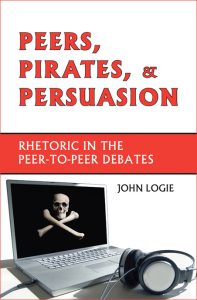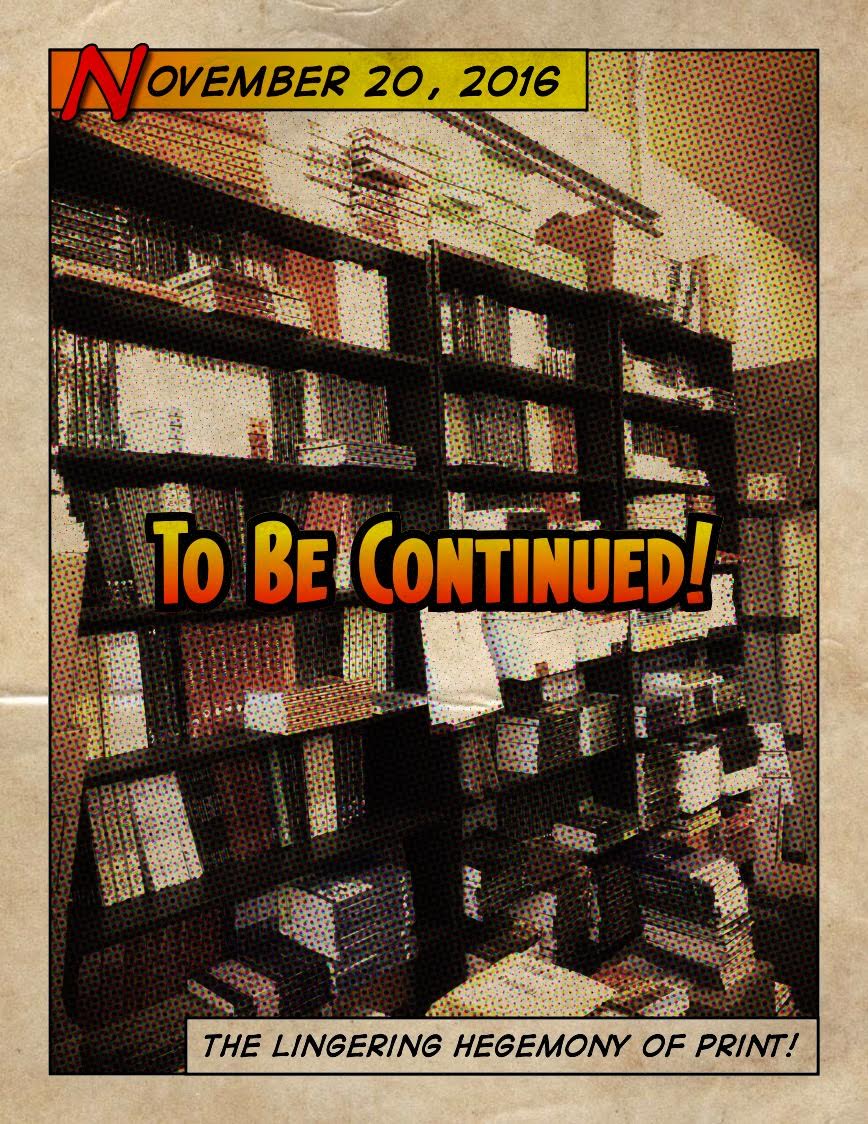As the DIY movement has flourished in the early 21st century, it has extended its reach far into academia. With the advent of desktop publishing, scholars have been utilizing these technologies to create content that in previous eras would have been unthinkable. Publishing, the life support system of the academy, has also in recent years been subsumed into the “Maker Revolution.” Clemson University Professor of English David Blakesley was among some of the early adopters of using technology to create an academic press. He and PhD student Brian Gaines recently “sat down” virtually and had a discussion about the rise of independent academic presses and their implications.
Brian Gaines: On Parlor Press’s “About” page, you state, “[i]t was founded in 2002 to address the need for an alternative scholarly, academic press attentive to emergent ideas and forms while maintaining the highest possible standards of quality, credibility, and integrity. The Press’s primary goal is to publish outstanding writing in a variety of subjects. Because the Press is unencumbered by the bureaucratic machinery of older publishing entities, the stress can be more on excellence and innovation than on marketability or pedigree.” Can you elaborate on any specific events happening in academic publishing during this time that led to you founding Parlor Press?
David Blakesley: The events that led to Parlor Press was a convergence of forces and coincidences, not unlike the emergent order that develops from complex systems. The economic stress was palpable across the scholarly publishing industry (also trade publishing). On the technology side, the “democratization of production” made DIY production technically and economically feasible. Digital printing technologies started a new kind of industrial revolution where manufacturing was also democratized.
I wrote that description at a time when scholarly publishing was in peril on a number of fronts, most resulting from economic pressures. As a series editor for a university press, I knew that libraries had reduced their new book budgets, which stressed press budgets significantly. Where once a press might count on selling 600 copies out of the gate, it now might only sell 100. Suddenly, presses had to depend on books written by well-known authors. It’s not hard to imagine that marketing departments would suddenly play a larger role in the review process. In extreme cases, books would be judged solely by their sales potential, scholarly quality be damned. The deeper question was why libraries nearly stopped buying books in the first place. In many cases, their funds were reallocated to keep up with the high price of journal subscriptions charged by European conglomerates. So these large-scale economic forces had stressed scholarly publishing to the breaking point. The Modern Language Association issued several reports and letters in 2002 to publicize the crisis, one a letter from President Stephen Greenblatt.
The democratization of production created one possible way to respond. By 2002, the personal computer could finally fulfill its destiny as a fully capable and affordable desktop publishing system. Adobe’s Pagemaker evolved into InDesign, which is capable of producing the most complex type of book you can imagine. Digital printing technology had also made remarkable gains, so it was suddenly possible to publish high quality printed books one-at-a-time for low cost, while also getting them into the distribution stream. One of the first and now most successful printers was Lightning Source, a division of Ingram Content Group (one of the largest and oldest book distributors in the world). On the distribution side, Amazon had finally matured to the point where distribution was also not a barrier to entry into the publishing industry.
BG: John Logie’s Peers, Pirates, and Persuasion: Rhetoric in the Peer-to-Peer Debate, published in 2006, is regarded as the first book published under a Creative Commons Attribution-NonCommercial-NoDerivs 2.5 License. Since the publication of this book, other small publishers, such as Punctum, have followed suit. Can you explain why this book was chosen to be published in such a manner and why this couldn’t have happened at a traditional academic press?

DB: For a number of reasons, John’s was a perfect book to publish as an open-access title. By 2006, there had been a few other open access books published in our field, fewer still had appeared in low-cost print editions simultaneously with their open access counterparts. But this was the first to put a CC license on both print and digital editions. It meant that another noncommercial publisher could reprint the book if it chose. I’m not aware that any have, but the gesture was nevertheless important because it signaled allegiance to the idea that information should be free, a movement that’s been around since the 1960s.
Since Peers, Pirates, and Persuasion’s focus was about the issue of piracy and the government’s role in protecting copyright, it made sense to publish the book with this license. One goal of the experiment was to see how print sales might be affected since the natural conclusion would be that giving a book (and its rights) freely would cannibalize sales. It turned out not to affect sales positively or negatively, probably for a number of reasons. One is that average readers don’t worry much about a book’s license or its availability in multiple formats. That may be changing as readers become more alert to the significance and value of open access texts.
Because Parlor Press doesn’t need to please a university administration, we can experiment with new publishing models as we did with John’s book. For most university presses these days, there’s tremendous pressure to meet the bottom line. A few have been lucky enough to have excellent directors who’ve leveraged their success into more freedom to innovate. Collaborations like the University of Michigan Press’s Digital Rhetoric Collaborative, Utah State UP and the University Press of Colorado, and the partnership between Parlor Press and The WAC Clearinghouse are examples of how we’ve progressed.
BG: How have independent academic publishers changed the business model of older, more established academic publishers? What changes in business models for both types of publishers do you expect to see in the near future?
DB: It’s hard to know precisely, but there has always been competition between independent scholarly publishers and university presses. I see two types of independent presses these days. The more traditional independents, like Sage or Routledge, share common goals as private businesses, where revenue and growth are the bottom line. That usually translates to higher volume and higher prices. The primary customer for them has been university libraries, who always have operated on limited budgets. Lower demand translates to higher prices, so a book published by traditional independents will cost more and often only appear in hardcover editions, which are more appealing to libraries. A typical monograph of 200 pages might sell for more than $100. University presses, whose mission is not simply more revenue and growth but also service to the scholarly community, try to reach individual readers as well and so publish in paperback and hardcover at lower prices. More recently, however, small independent presses have joined the fray, publishing lower-cost books for individual readers in niche markets. Because of the democratization of production, digital publishing technologies (or print-on-demand), and ease of distribution, these kinds of independents can make ends meet. Often, those who run such presses are scholars and writers themselves and may be more interested in providing a valuable service to a scholarly community and to authors who want their books widely read and not merely available in libraries.
Over time, the presence of these small presses has had some influence on the willingness of university presses to find ways to reach a wider audience not just by keeping prices lower but by venturing into print/digital solutions and open access models. That’s what we found in our collaboration with the WAC Clearinghouse many years ago (print sales go up as online readership goes up; see “Open Access Book Publishing in Writing Studies: A Case Study“).
BG: How has the advent of digital publishing affected these older publishing houses? Who is pushing the boundaries, and in what ways?
DB: In addition to lowering the costs of production, digital publishing technologies have posed significant challenges and have thus been only slowly adopted. The production process is more complex than ever. The publishing industry uses a model where specialization and the division of labor is the norm. There is a culture of production and practice that still exerts its power. In a world of quickly emergent technologies, publishers may be slow to respond because those who work for them are accustomed to making books a particular way, often with print-only in mind, and expertise distributed unequally across production. In our maker generation, where development and production require agile collaboration and new technologies, “do-it-ourselves” (DIO!) publishing is in reach. Smaller presses and even individual authors gain more control over and involvement in the production process. with more freedom to innovate in timely ways..
As a teacher, one of my goals from the beginning has been to bring authors closer to the act of production because how we make something shapes, or should shape, the creative process.

BG: You have often stated that a lot of what you have learned running an independent press has been “on the job.” How has the digital revolution contributed to your DIY ethos of running a press, and what are some of the challenges/advantages of publishing in digital formats vs physical formats?
